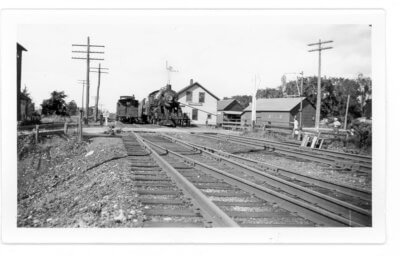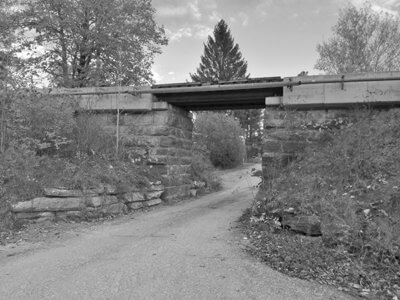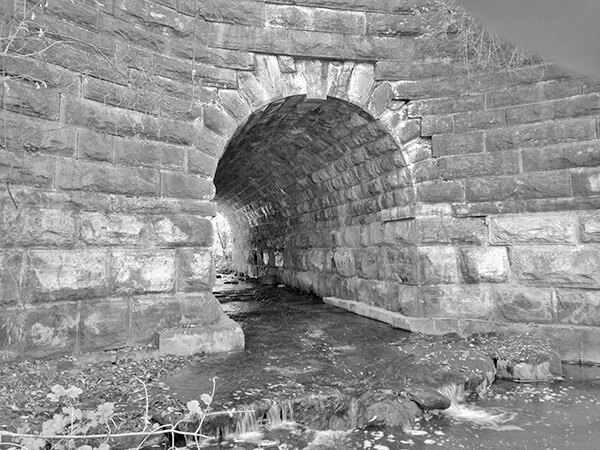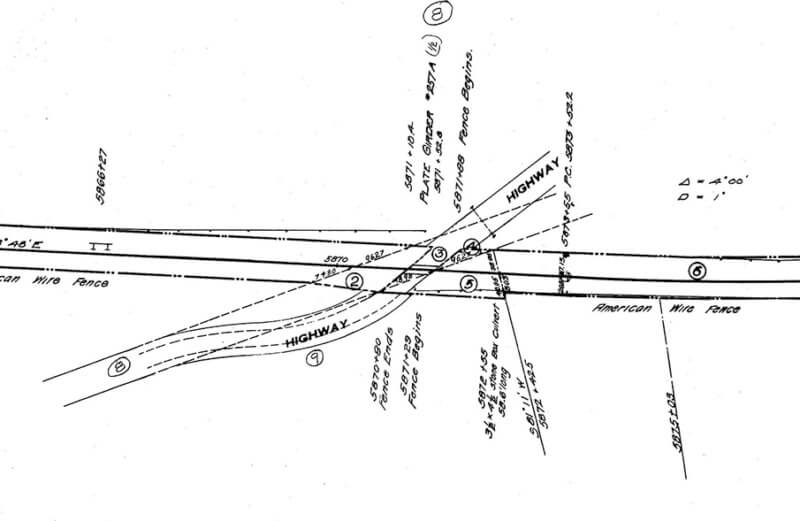The Greenbush Road underpass

Charlotte Land Trust, produced by Perceptions, Inc., 2003)
[Burlington Free Press, August 8, 1905]
A horrible accident occurred here this afternoon…
[Frank W. Weston and his son, Leslie Earl Weston] were driving from the north, approaching Charlotte Four Corners. They had reached the Bora’s crossing and either did not hear or see the train approaching or else their horse became unmanageable and dashed upon the track just as the train reached the crossing. The horse was lifted in the air and thrown into a lot 50 feet away. The carriage was broken to splinters. Both men were hurled from their vehicle and landed on the cowcatcher of the engine. The engine did not stop, but proceeded on its way to the Charlotte station …
The carnage found on the cowcatcher was described in graphic detail. An investigation cleared the railroad engineer of any wrongdoing, blaming negligence by Frank Weston. Later information indicated that the train’s steam whistle completely unnerved the horse, which became wild and uncontrollable and raced into the path of the engine.
 The Rutland-Burlington Railroad went into operation in 1848. At that time, railroad design engineers were only concerned with building the rail, and the safety of a horse and carriage was not a consideration. As time passed and the population grew, many of the highway-grade crossings became more dangerous to carriages—and ultimately to motorized vehicles. On July 27, 1910, the Weston accident was the driving force behind the selectmen of the Town of Charlotte, Herbert Thorp, Joseph Bora and Frank Smith, hiring A.W. Sherman of Charlotte to file a legal petition before the Vermont Public Service Commission against the railroad, complaining that Bora’s crossing on what is now Greenbush Road was hazardous and that mitigation was required.
The Rutland-Burlington Railroad went into operation in 1848. At that time, railroad design engineers were only concerned with building the rail, and the safety of a horse and carriage was not a consideration. As time passed and the population grew, many of the highway-grade crossings became more dangerous to carriages—and ultimately to motorized vehicles. On July 27, 1910, the Weston accident was the driving force behind the selectmen of the Town of Charlotte, Herbert Thorp, Joseph Bora and Frank Smith, hiring A.W. Sherman of Charlotte to file a legal petition before the Vermont Public Service Commission against the railroad, complaining that Bora’s crossing on what is now Greenbush Road was hazardous and that mitigation was required.

The board met in Charlotte and determined the crossing was “among the most dangerous” in the state and ordered an underpass that necessitated a substantial alteration of the roadway.
The Rutland Railroad is hereby ordered to construct an underpass with suitable concrete abutments, spanned by a bridge of steel girders with ballasted floor, suitable to carry the railroad traffic. Said underpass shall at every point be at least twenty-one feet wide from face to face of the abutments; and shall have a clearance of at least thirteen feet from the crown of the finished roadway to the lowest part of the spanning bridge; and, to accomplish this, the grade of the railroad at the underpass shall be raised at least four feet. [13th Biennial Report of the Public Service Commission of the State of Vermont; June 30, 1910 to June 30, 1912, pp. 106-108.]

A great amount of earth was removed, the underpass and road were constructed, and the terrain and box culvert under the railroad on the north side were altered to accommodate the new roadway. The houses on the north side were once nearly at road level. Time passed and memories faded. Frank Weston and his son rest in Union Cemetery in Morrisonville, New York; today’s travelers have no knowledge of the change. As you drive north, across from the entrance to the Charlotte Park and Wildlife Refuge, the old roadbed is still visible as it rises toward the tracks, and the road continues beneath what was once known as Bora’s crossing.

